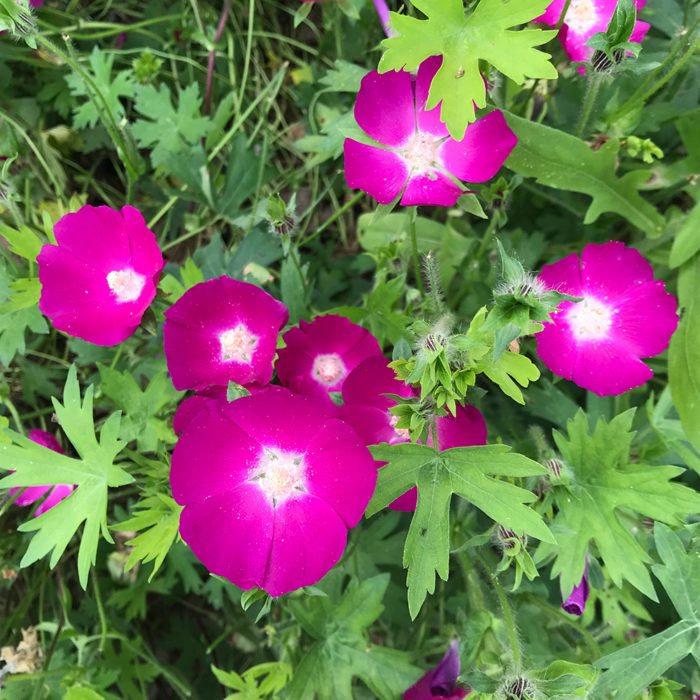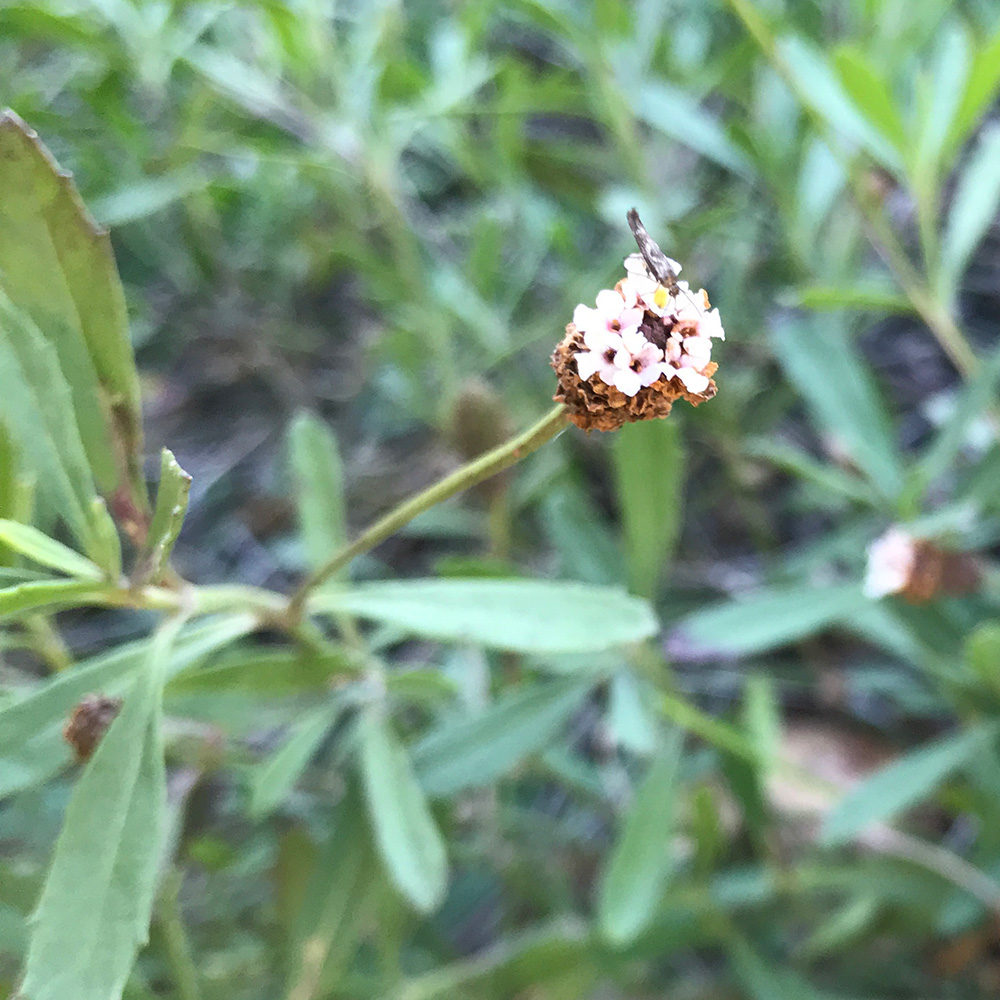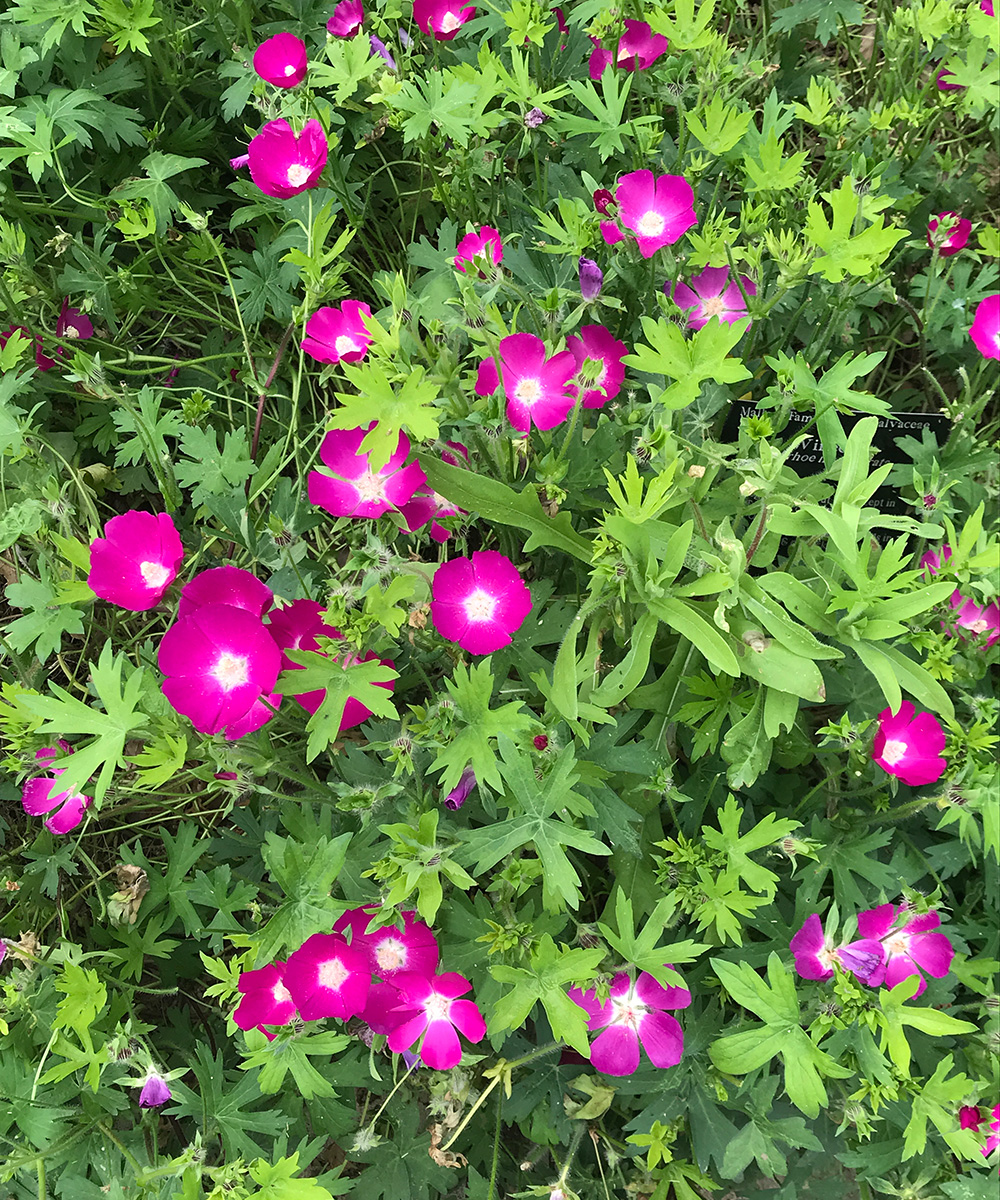
Do you ever have a spot in your garden, usually at the very front of a bed, that needs a short plant? Maybe you even want it to grow up under some taller plants behind it, creating a backdrop for them. Or maybe you just need a little something that will pop in the front of your border, catching the eye of passers-by. Here are a few native Southern Plains plants that fit that bill.

Roemer’s mimosa
Mimosa roemeriana syn. Mimosa quadrivalvis var. platycarpa, Zones 7–10
Roemer’s mimosa, or sensitive briar, is the type of plant that Dr. Seuss might have invented for one of his children’s books. It’s bright, weird, and over-the-top! Many folks remember this species from childhood because the leaflets fold closed upon being touched. Native to north Texas and possibly Oklahoma, this low-growing beauty sends up adorable bright pink puffball flowers that are tipped in yellow-gold. Roemer’s mimosa blooms from spring through summer and likes full sun and drier soils. It’s hard not to get down on your stomach in the garden just to take a closer look at this one, and because it grows at a height of 2 to 6 inches, that’s about what it takes to make its close acquaintance.

Frog fruit
Phyla nodiflora, Zones 6–10
I really believe that frog fruit is an underutilized beauty in garden plantings. Its rambling dark green foliage makes for a good ground cover that remains evergreen in mild winters. In colder winters, it may die back to the roots, which resprout in spring. The tiny white flowers are clustered around a brown center. They appear to form one larger (but still very small) flower. Frog fruit is memorable for its fun name and is popular with the butterflies. At only 3 to 6 inches in height, it is truly a short (and sweet) perennial. This drought- and flood-tolerant species is reliable anywhere you need a tough, hardy, noninvasive ground cover. It will grow in sun to partial shade, and it blooms from May to October.

Silver ponyfoot
Dichondra argentea, Zones 8–9
While not as hardy or cold-tolerant as frog fruit, silver ponyfoot really shines when it’s in its element. Its silver-gray foliage looks bright and shiny in sunlight, and it provides a beautiful backdrop for more colorful bloomers planted among it. Grown as a ground cover, it won’t get taller than 2 to 4 inches. This plant requires an open, sunny spot that is well drained. It’s more cold-sensitive than the other species I mention here, acting as a perennial in Zones 8 and above, but it is easily used as an annual in Zones 7 and below. The blooms are not noticeable, but the foliage is what makes this plant special.

Purple poppy mallow
Callirhoe involucrata, Zones 4–9
Purple poppy mallow, or winecup, produces 2-inch-wide bright purple flowers shaped like a cup. This plant is a low sprawler with dark green, deeply incised foliage that is somewhat variable in shape. This species is a little taller than the others mentioned here, occasionally reaching 12 inches in height with its blooms fully extended. It is more typically found growing at about half that height. Purple poppy mallow blooms throughout the spring and summer and is quite easy to grow. It can grow in sun or partial shade, dry or moist soil, rocky or sandy soil, and alkaline or acidic soil. Rabbits like to nibble down this perennial’s foliage, but I have successfully dissuaded them with nontoxic powder repellents such as Enviro Pro’s Rabbit Scram, and this plant is worth the trouble.
Consider one of these low-growing beauties the next time you need something short and sweet in your garden. And keep in mind that all four of these picks are quite drought tolerant.
—Karen Beaty is a horticulturalist at the Lady Bird Johnson Wildflower Center in Austin, Texas.


















Comments
Log in or create an account to post a comment.
Sign up Log in